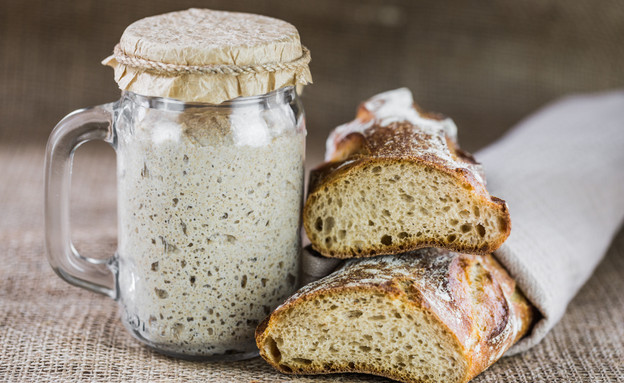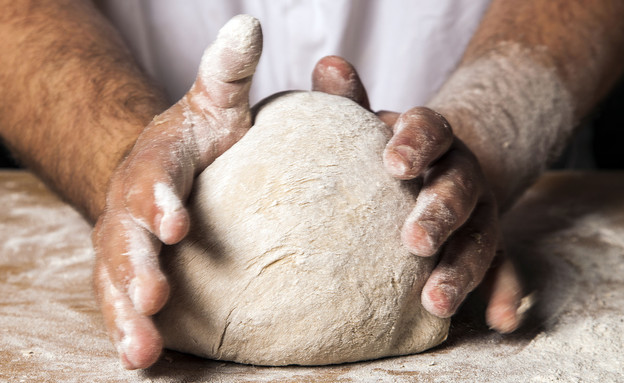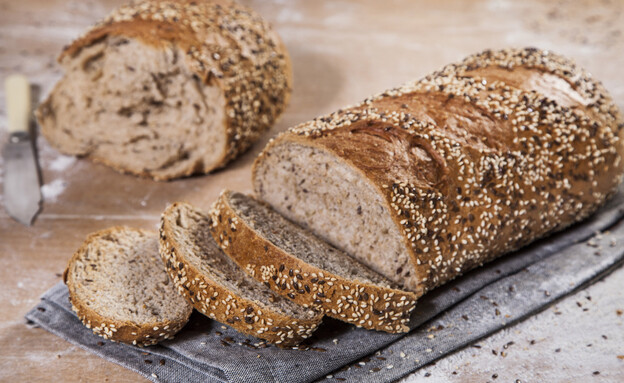The glorious past of sourdough bread
The earliest known documentation of yeast bread comes from ancient Egypt in the years 1300-1500 BC and China in the years 500-300 BC. The flour composition of these breads consisted mainly of wild wheat, as said and Incorn.
From then until the development of an industrial method of growing and packaging yeast in the late 18th century, sourdough was the most common way of puffing dough, but since then its popularity has declined. Today professional and amateur bakers alike possess sourdough both because of the complexity of flavors they add to breads and other apple pastries and because of the health benefits of long flour fermentation, which include the breakdown of phytic acid which makes it difficult to absorb minerals found in wheat like iron, calcium and zinc.
Recently, interest in sourdough bread seems to be returning again, and making sourdough bread has become a popular activity, especially during the Corona period.
What is sourdough?
Acid is a mixture formed from a combination of 4 ingredients: flour, water, natural yeast (wild yeast) and bacteria (or bacteria, which sounds better to you). When we mix water and flour together, the mixture begins to “collect” yeast and bacteria that grow in our environment. And this is just one of the processes that this wonderful mixture goes through.
During the fermentation process, lactic acid (lactic acid), acetic acid, carbon dioxide and alcohol and many other nutrients are formed. Studies show that in the microbiological jungle of sourdough, over 300 flavors and aromas are created that provide bread with a sour, milky, fruity and deeper aroma than any industrial bread. Our control over the range of flavors of the bread in working with sourdough is significantly greater. The biochemical process that takes place in leaven fermentation also creates a more stable, moist, softer and more uniform texture, which prevents disintegration. In addition we enjoy healthier bread, as most flour and gluten bonds are optimally broken down in the long and complex fermentation process. In addition, lactic acid appears to act as a natural preservative and prevents the formation of mold in bread, so this is the ideal way to effectively preserve homemade bread.
How does it contribute to health?
Although sourdough bread is usually made from the same flour as other types of bread, the fermentation process used to make it improves its nutritional profile in several ways. These are its nutritional benefits:
Folic acid, potassium and magnesium. Sourdough bread is especially rich in nutrients that the body can easily absorb. This is due to the way lactic acid bacteria in bread interact with these nutrients. These bacteria destroy certain types of acids common in other breads, which increases the availability of nutrients like folic acid, potassium and magnesium. Folic acid is essential for our body to divide cells and create DNA and other genetic material. For example, during pregnancy, it is important to consume folic acid in order to reduce the risk of fetal malformations. Potassium also aids in cell function, regulates heart rate, helps nerves and muscles to function properly, and is essential for protein production and carbohydrate metabolism. Magnesium regulates muscle and nerve function, controls blood sugar and protein levels, and helps produce protein, bones and DNA.
Promotes healthy aging. Whole grains and bread, like sourdough bread, are a major ingredient in the Mediterranean diet. Several studies have suggested that it may be an essential food to help promote healthy aging. A study published in the journal Aging Clinical & Experimental Research found that regular consumption of whole wheat sourdough bread prevents disease. Lactic acid bacteria are also responsible for increasing the antioxidants in sourdough bread compared to other types of bread. Antioxidants protect the cells from damage that causes serious diseases such as cancer, diabetes, heart disease, Alzheimer’s disease and more.
Effect on blood sugar. A combination of sourdough bread may help maintain more stable blood sugar levels compared to white bread. Bacteria that help create leaven also have a unique effect on the starch in bread. It changes the structure of the bread molecules – causes the body to absorb them more slowly, which lowers the glycemic index of the bread. This means that insulin levels will not rise as much after eating a slice of sourdough bread as they would after eating white bread.

Easier to digest. According to some studies, sourdough bread acts as an atonement-biotic, which means that the fiber in the bread helps to feed the “good” bacteria in the gut (microbiome). These bacteria are important for maintaining a stable and healthy digestive system.
Less gluten. Sour bread contains less gluten than other forms of bread. Apparently the acid in bread breaks down gluten. As a result, people with Gluten intolerance May find that sourdough is easier to digest.
Increasing the availability of bioactive materials. Bioactive substances are molecules found in fruits, vegetables and whole grains. Examples are carotenoids, antioxidants, fatty acids, BCAAs and more. When we go to the supermarket and buy wholemeal bread we buy with it quite a few bioactive substances that will do us good for body and mind, but what a pity, these are unstable substances with low solubility in water whose bioavailability (amount reaching the blood) is too low. This is where sourdough bread comes into the picture and presents much higher bioavailability than packaged breads from the writers. In a study conducted by the Public Health Institute of Finland, wholemeal yeast bread was compared with wholemeal sourdough bread and whole rye (separately). The availability of bioactive ingredients was significantly increased in sourdough bread compared to that with yeast. The advantage was even greater for rye bread.
Potential risks of eating sourdough bread
Sour bread is indeed nutritious, but it is worth taking a few aspects into account. Many women enjoy making pickles at home. While this is usually completely safe, in some cases the pickle is broken. It is important to pay attention to cases where the sourdough does not bubble, develops green, pink, orange or black spots or if a furry crust appears.
It is important to remember that sourdough contains gluten, as I mentioned earlier, sourdough bread usually contains less gluten than regular flatbread. People with gluten intolerance may find that light is easier to digest, but people with celiac disease are more likely to experience symptoms if they eat sourdough bread. In case of gluten intolerance or celiac disease, the doctor should be consulted before adding sourdough bread to the diet.
In conclusion, for those who enjoy good bread and like to work with their hands, sourdough bread should be the bread of choice. This will allow you to put into your body a healthier and more balanced diet produced from live and breathable dough and gain its nutritional benefits.

Whole spelled sourdough bread recipe / Jana Foreman
Ingredients:
- 100 g of sourdough at its peak
- 500 g whole spelled flour
- 360 g of water
- 10 g salt
Instructions:
1. Weigh everything in a bowl, mix well (about 4-5 minutes).
2. Cover with cling film or wrap in an airtight bag.
Let the dough rise for about half an hour at room temperature.
After half an hour, fold (fold the dough from each side to the middle)
5. Shape the dough and place in the castan / English mold. In the box: Close the lid almost to the end and wait for it to reach almost to the lid. If baking in an English cake pan (without a lid) put in a plastic bag, wait until the dough doubles in size. If you have not reached maximum swelling, you should slice the bread (only in a pan without a lid). Do not be afraid to give swelling time, it can also take 4-5 hours in winter.
Turn the oven on 250 degrees top and bottom (no turbo required) one hour before baking. In a box: With the lid closed for about half an hour, lower the lid and the temperature to 230 degrees and bake for another 10 minutes. In English: Add about a glass of boiling water at the beginning of baking into another tray at the bottom of the oven.
7. Remove the bread straight from the pan when it comes out of the oven on a cooling rack and let it cool for at least an hour or two. enjoy your meal
Maria Suidan, Clinical Dietitian, B.Sc , R.D, Heli Maman, a network that specializes in a healthy lifestyle
